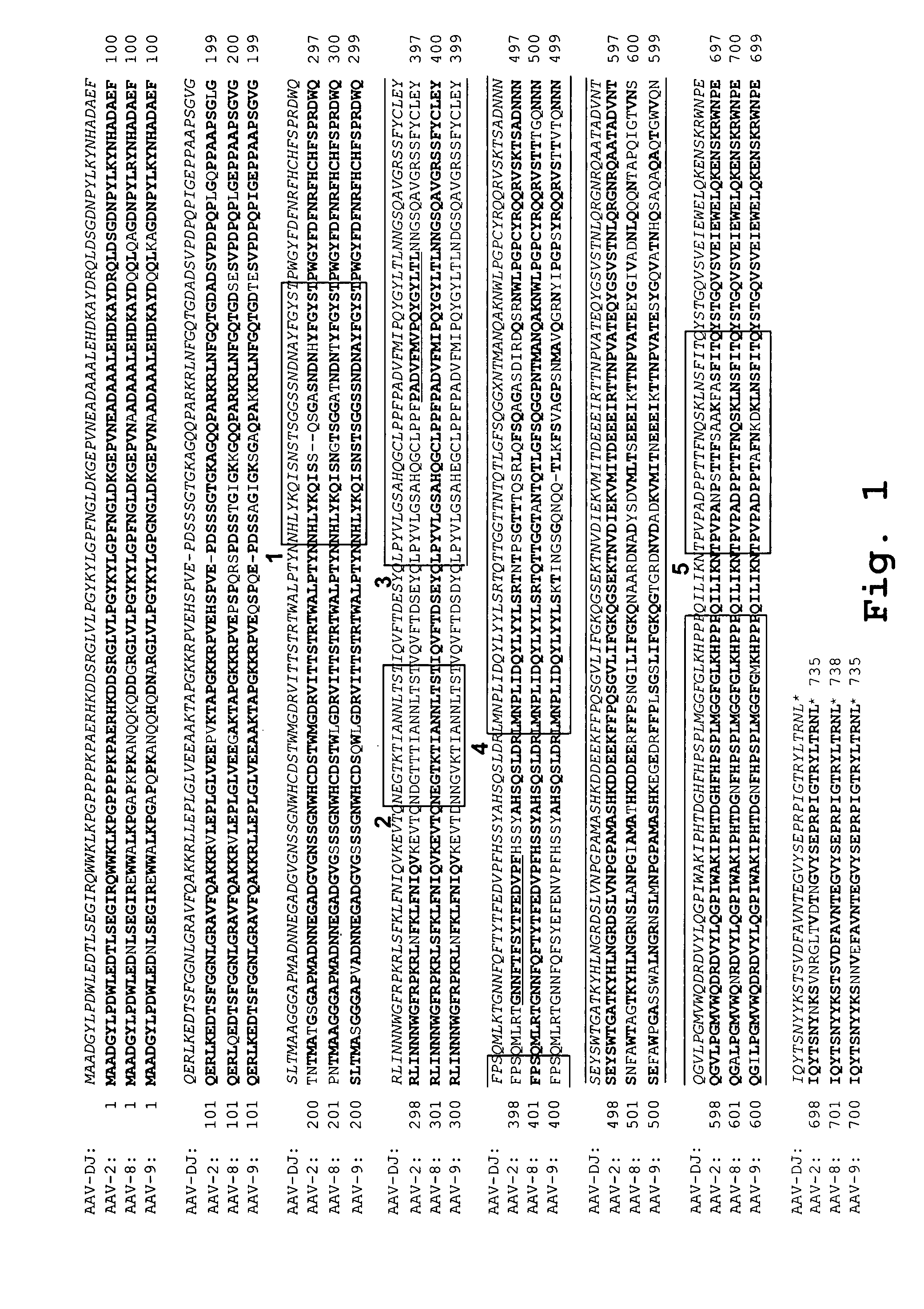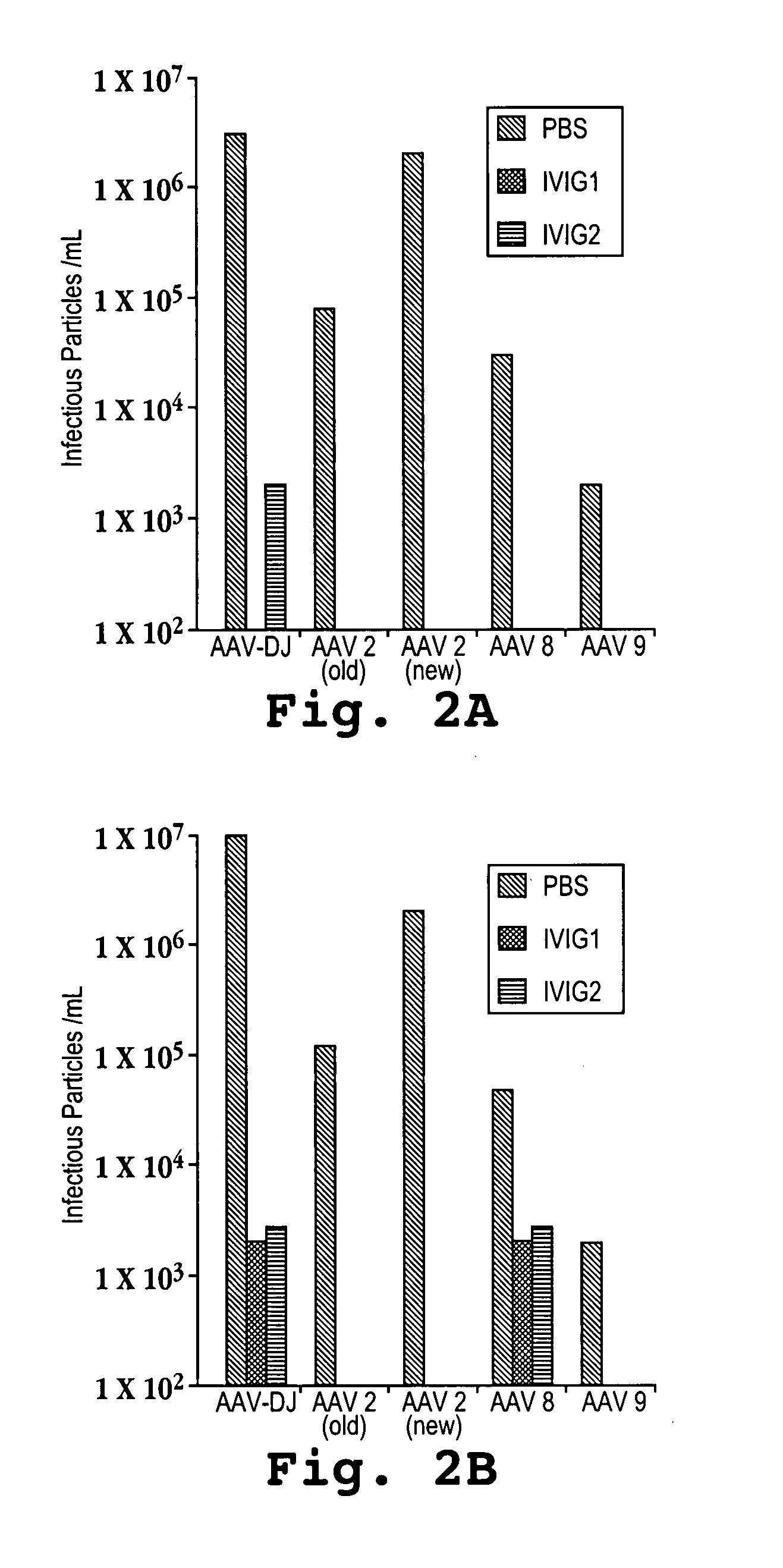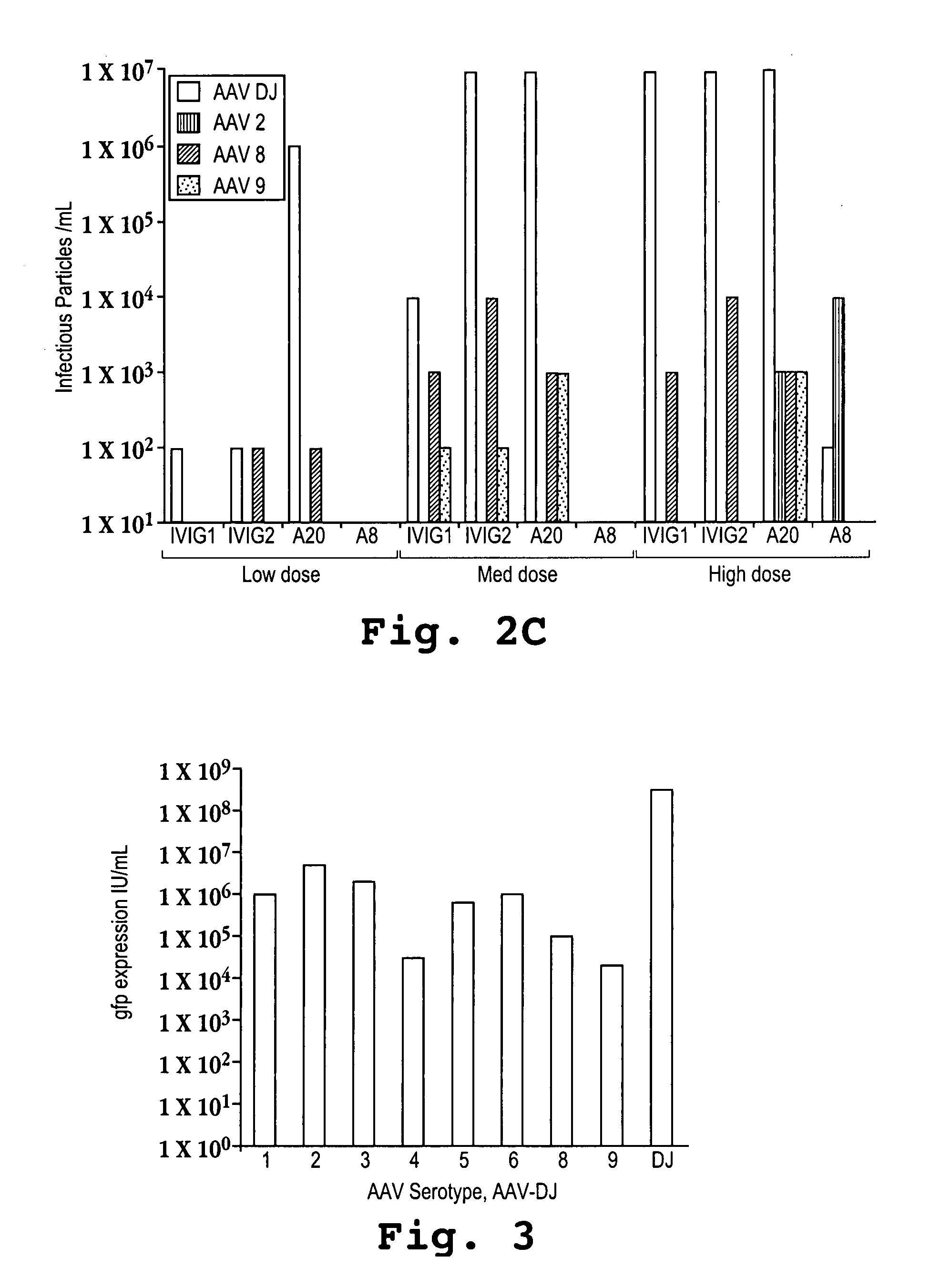AAV capsid library and AAV capsid proteins
a technology of capsid proteins and capsid libraries, which is applied in the field of aav capsid proteins, can solve the problems of ineffective transduction of clinically relevant cell types and tissues with these vectors, the current use of other vectors is associated with toxicity or some human diseases, and the number of clinically relevant cell types and tissues is not high
- Summary
- Abstract
- Description
- Claims
- Application Information
AI Technical Summary
Problems solved by technology
Method used
Image
Examples
example 1
AAV Capsid Library Generation
[0093]A. Plasmids for AAV Capsid Library Generation
[0094]Plasmids containing full-length capsid (cap) genes of seven different AAV serotypes were obtained (AAV-2, -4, -5, -8, -9, avian and bovine AAV). Goat AAV was partly synthesized (GeneArt, Regensburg, Germany) as a 888 nt fragment (nt 1023 to 1910). This subclone spans the entire right half of the goat AAV capsid protein, which comprises all 42 reported differences between goat AAV and AAV-5. The other seven cap genes were initially amplified via PCR and subcloned into pBlueScript II SK (Stratagene). The purpose was to flank all cap genes with sites for the unique restriction enzymes Pac I (5′) or Asc I (3′), to facilitate later cloning of “shuffled” cap genes into a wildtype AAV plasmid (see below). All primers also contained either a Hind III (5′) or a Spe I (3′) site, to allow directed cloning into pBlueScript (none of the four restriction enzymes cuts in any parental cap gene). A 20 nt signature ...
example 2
In vitro Transduction with Recombinant AAV-DJ Vectors
[0104]A. Helper Plasmid Cloning and Vector Particle Production
[0105]Helper plasmids expressing wildtype AAV-2, -8 or -9 cap together with AAV-2 rep genes, as well as AAV-2-based vector plasmids expressing the hFIX gene from a liver-specific or the EF1α promoter, were previously described (Nakai, H. et al., J. Virol., 79:214-224 (2005)); Gao, G. et al., J. Virol., 78:6381-6388 (2004)). Two self-complementary vector plasmids expressing either the gfp gene from a CMV promoter, or the hMT gene from an RSV (Rous Sarcoma Virus) promoter, were prepared using conventional techniques.
[0106]For cloning of helper plasmids expressing shuffled cap genes, the entire AAV-8 cap gene was removed from the AAV-8 helper construct by cutting with Swa I and Pme I (both create blunt ends; Swa I cuts 9 nt upstream of the VP1 start codon, Pme I cuts 53 nt downstream of the polyadenylation signal). The novel cap genes were amplified from the respective TOP...
example 3
In vivo Studies
[0109]Recombinant AAVs with either the AAV-DJ, AAV-2, AAV-8, or AAV-9 capsids were produced by triple transfecting cells with a plasmid encoding the human factor IX (FIX) gene under the control of an adjacent liver-specific promoter and flanked by AAV inverted terminal repeats (ITRs), a plasmid encoding adenoviral helper genes, and a plasmid encoding the AAV-2 rep gene and either the AAV-DJ, AAV-2, AAV-8, or AAV-9 capsid protein. The liver-specific promoter that was used was a human alpha-1-antitrypsin (hAAT) promoter fused with an apolipoprotein E (ApoE) enhancer and an HCR (hepatic locus control region). The AAV ITRs that were used were derived from AAV-2 and are identical to each other.
[0110]Doses of 5×1010, 2×1011, and 1×1012 (low, medium, and high, respectively) recombinant viral particles were injected into mice via tail vein infusions with a volume of 300 microliters infused over a period of about 10 seconds. The mice were bled at 1, 3, and 8 days after the inf...
PUM
| Property | Measurement | Unit |
|---|---|---|
| temperature | aaaaa | aaaaa |
| total volume | aaaaa | aaaaa |
| total volume | aaaaa | aaaaa |
Abstract
Description
Claims
Application Information
 Login to View More
Login to View More - R&D
- Intellectual Property
- Life Sciences
- Materials
- Tech Scout
- Unparalleled Data Quality
- Higher Quality Content
- 60% Fewer Hallucinations
Browse by: Latest US Patents, China's latest patents, Technical Efficacy Thesaurus, Application Domain, Technology Topic, Popular Technical Reports.
© 2025 PatSnap. All rights reserved.Legal|Privacy policy|Modern Slavery Act Transparency Statement|Sitemap|About US| Contact US: help@patsnap.com



